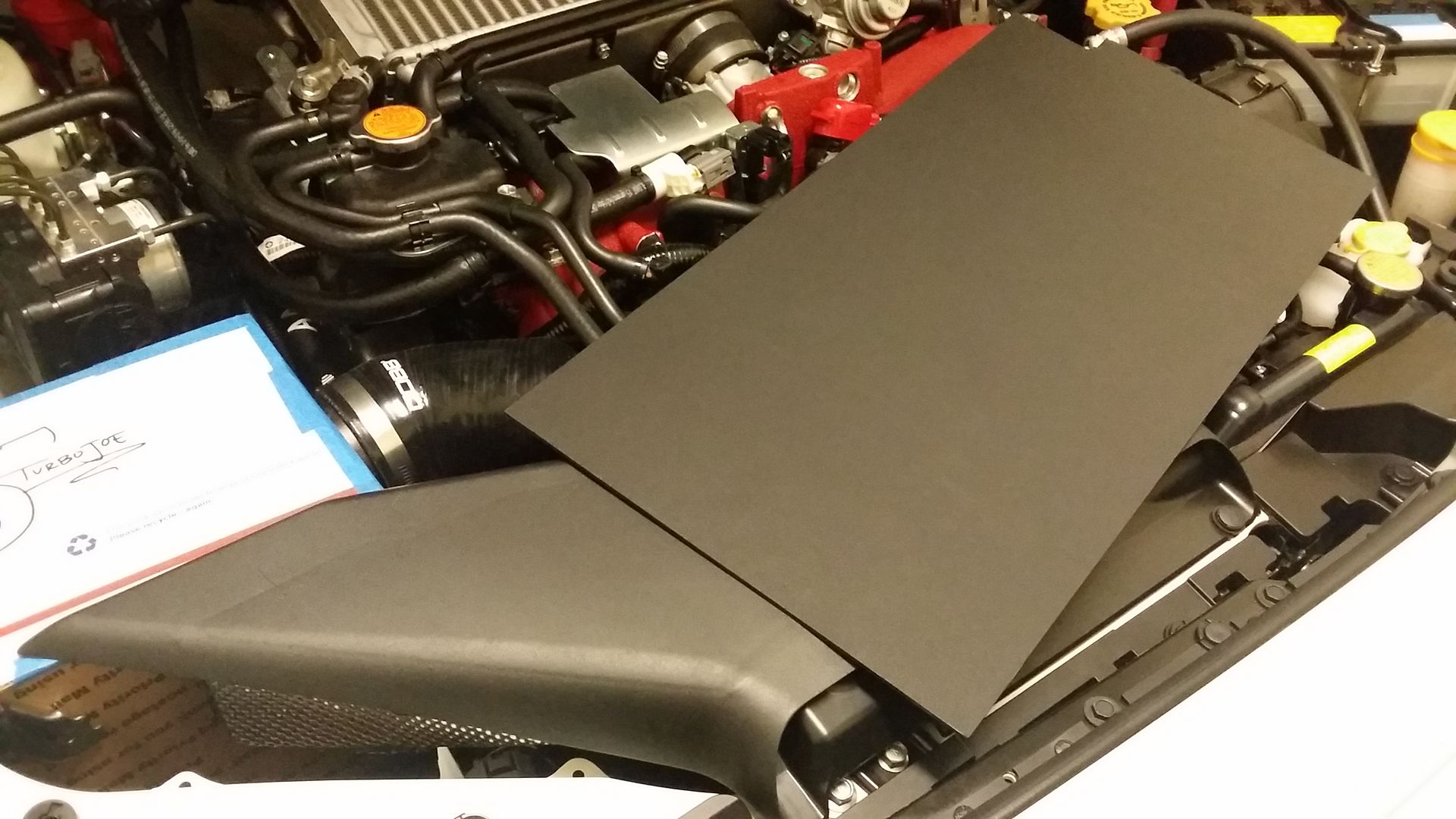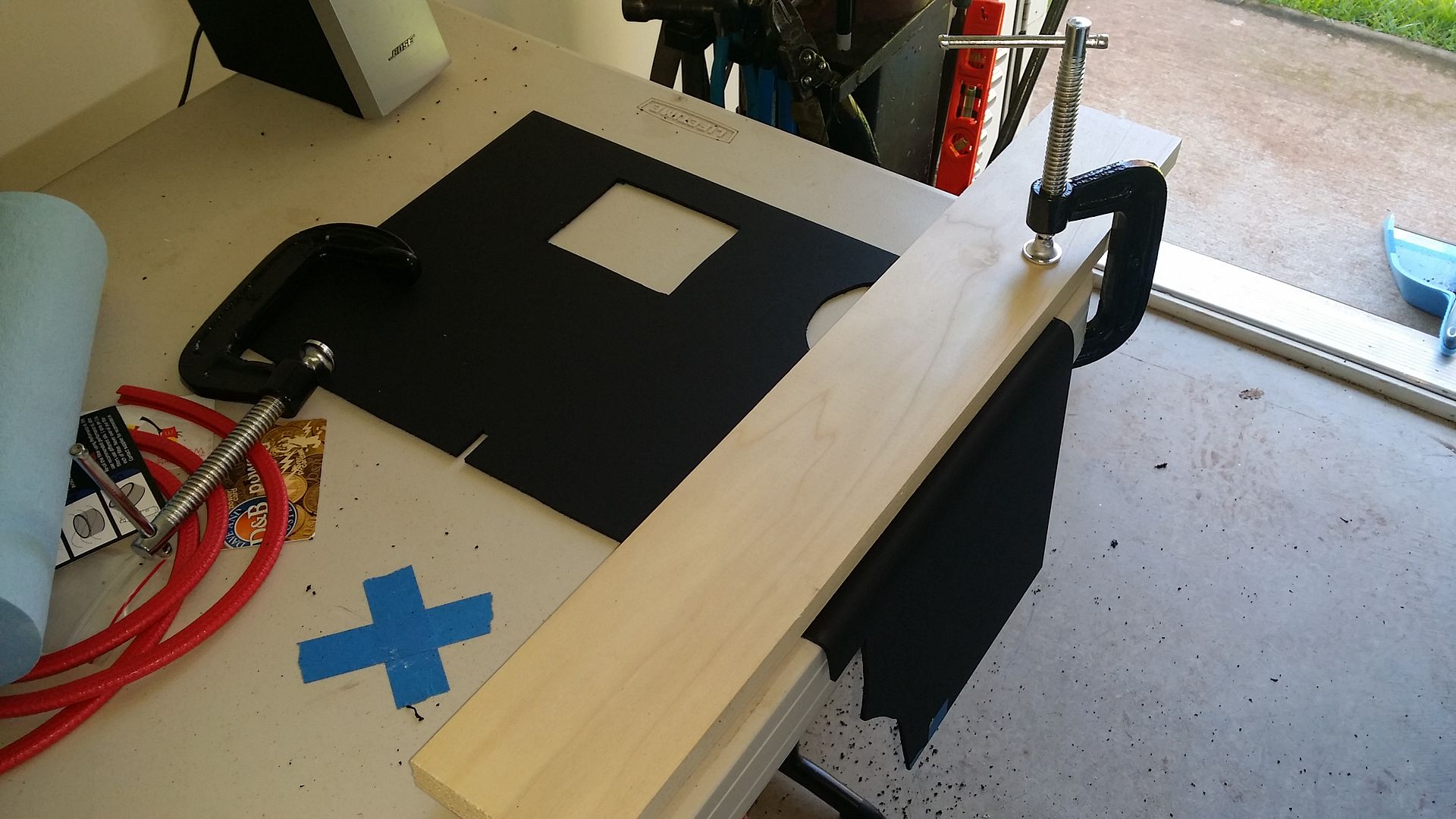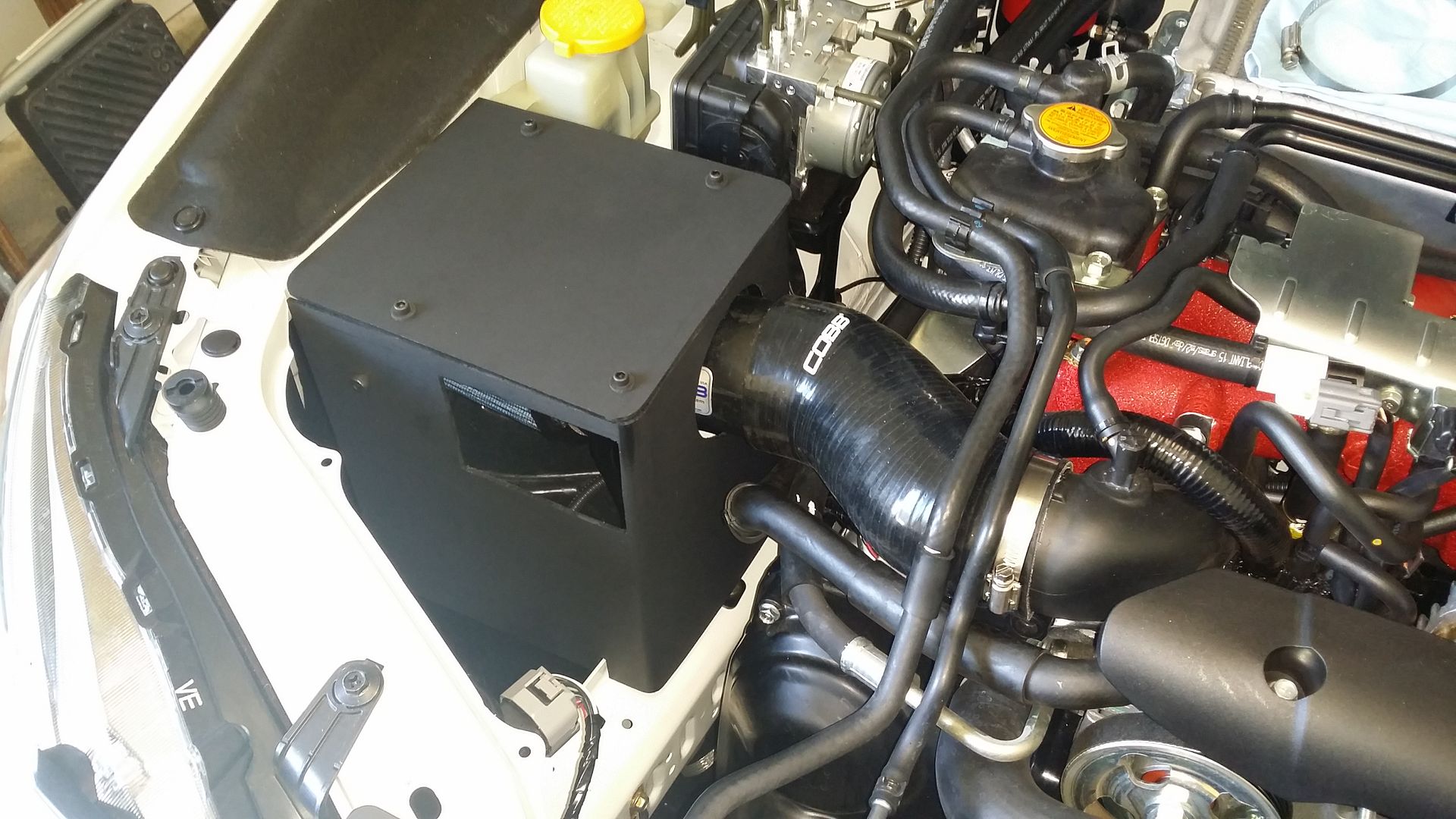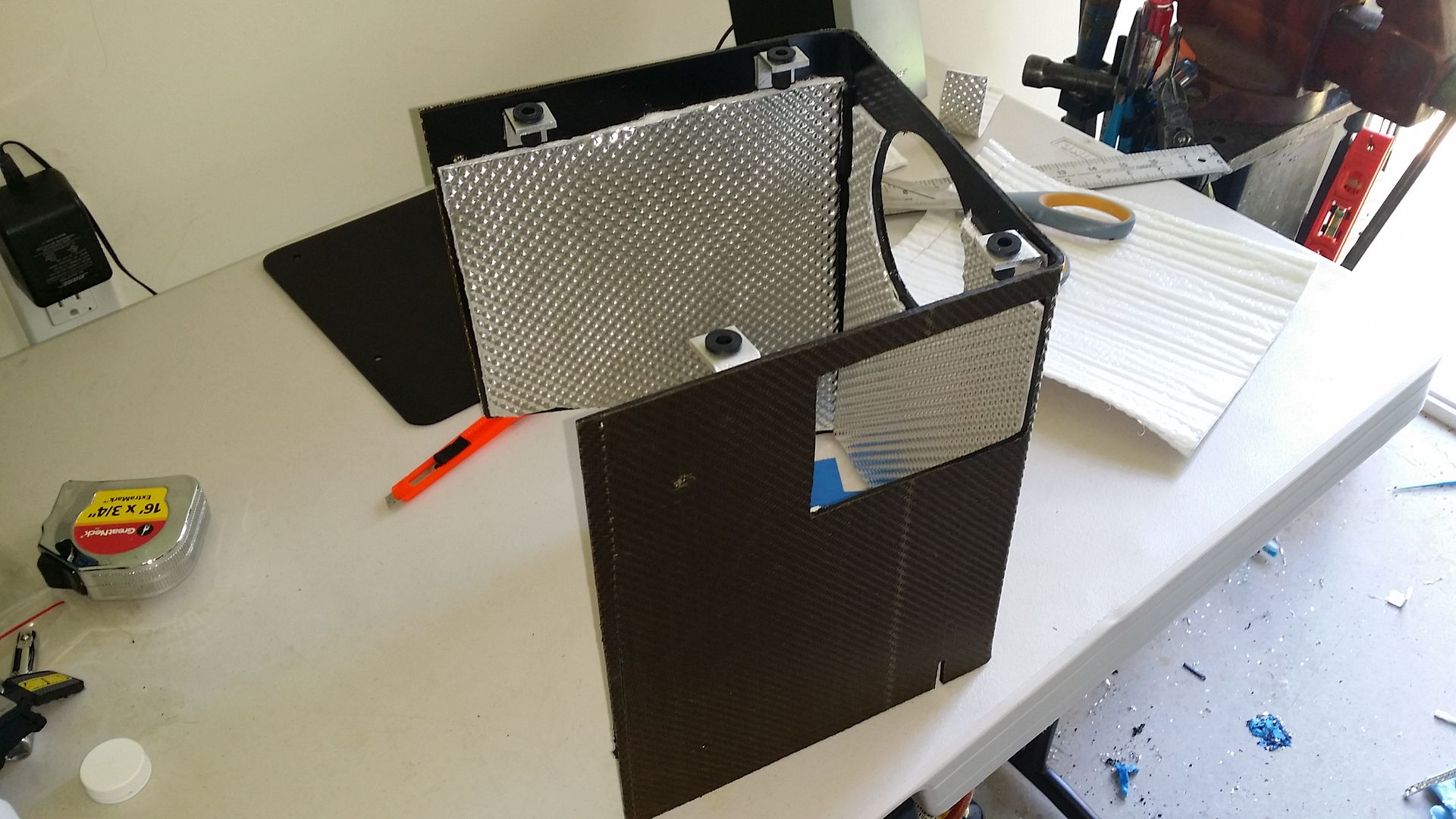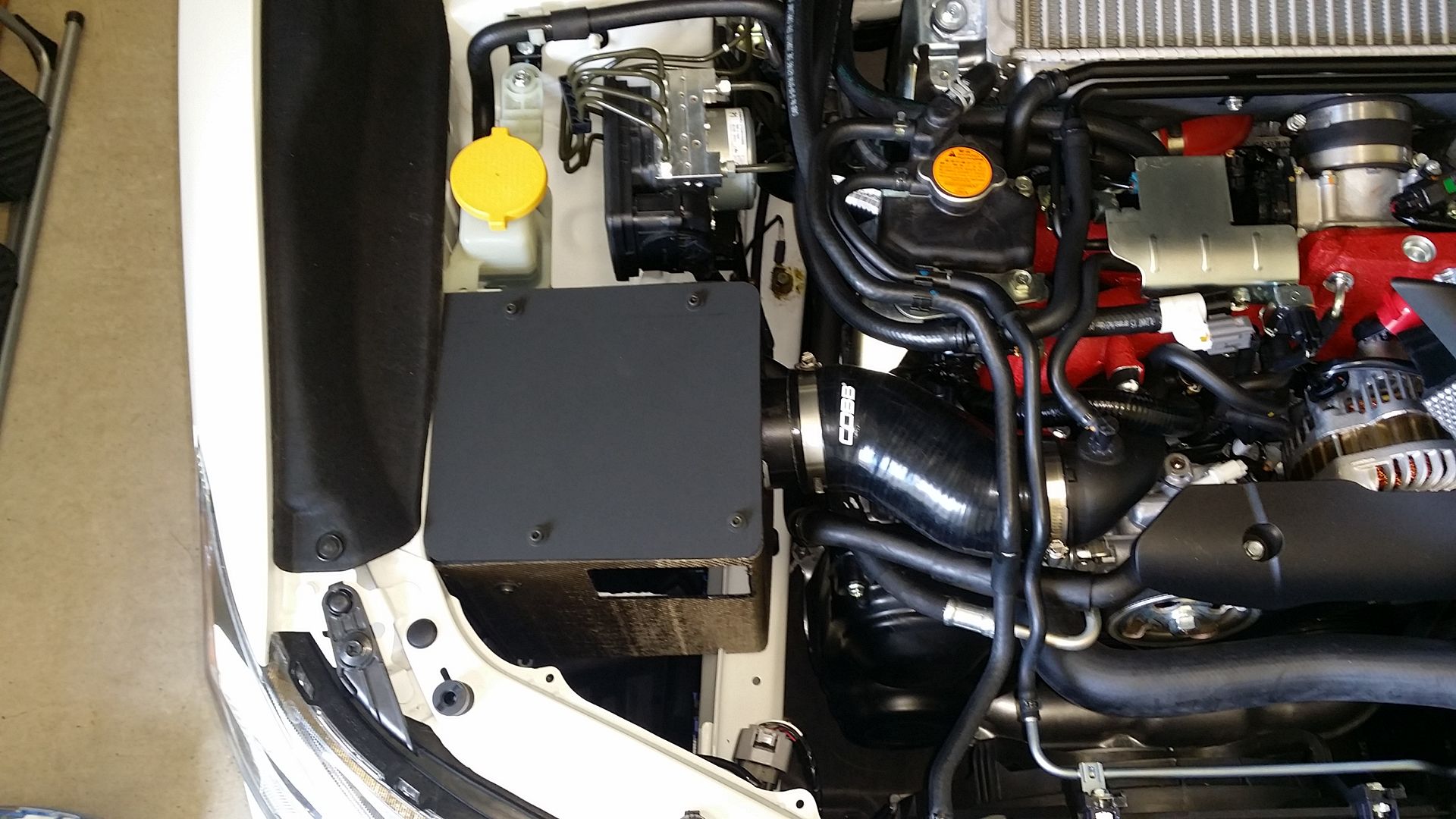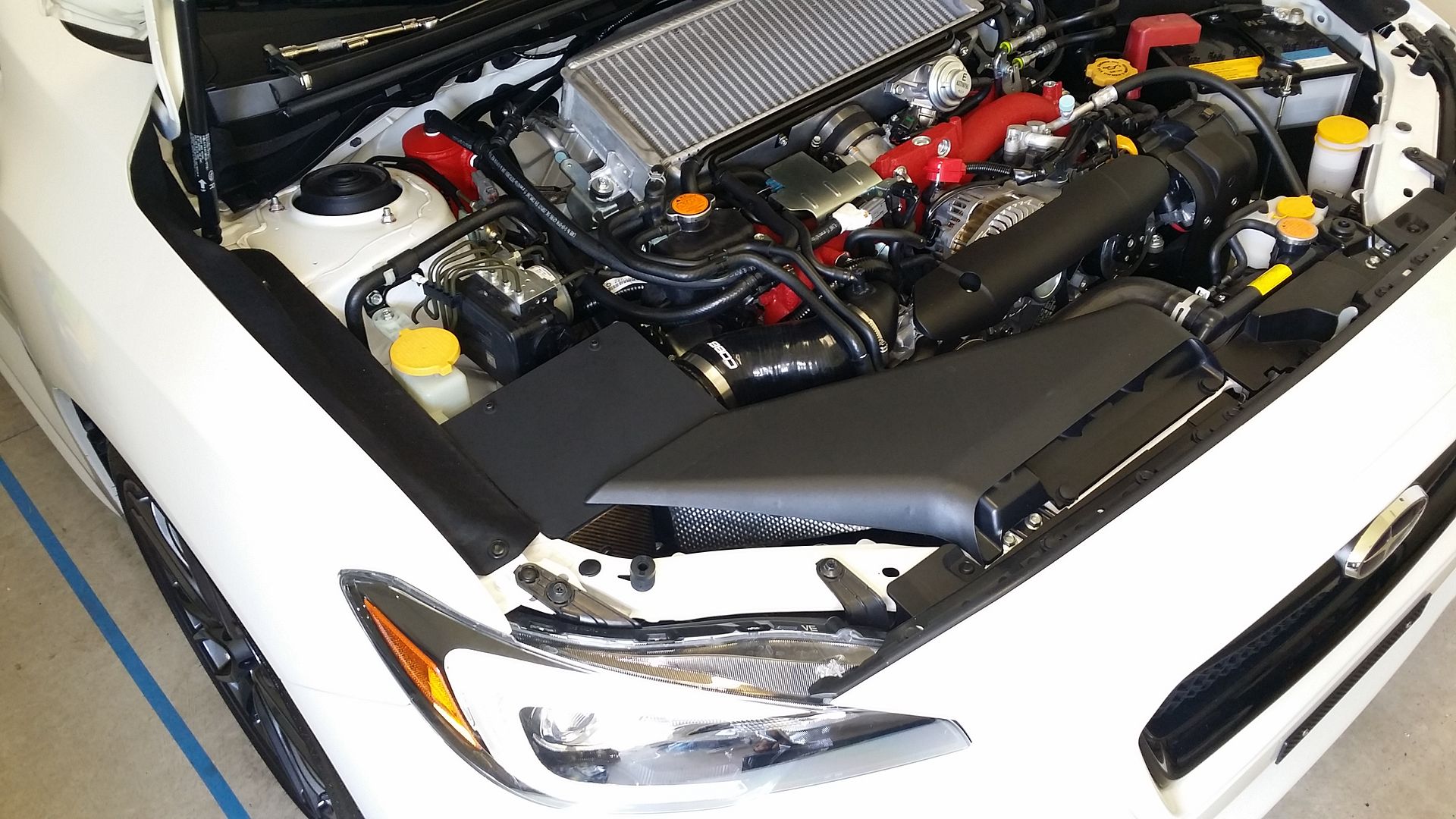On top of the usual flawed engineering of turbcharged Subaru engines, the EJ is notoriously known for intake heat soak. We all are aware that heat soak causes the ECU to retard timing to save the motor, which in exchange reduces power and efficiency. And in this time of season, the summer heat only adds more fuel to the fire...
Let's reflect. First off, the front intake snorkus or scoop located under the hood, sits on top of the blazing hot radiator. From there, the already hot air is fed into the airbox where it passes through the MAF sensor, which then enters the intake elbow that is heated again by two more radiator hoses clipped on top of it. Continuing on, the air is sucked into the turbo via the turbo inlet. The air is compressed in the turbo's compressor housing, become more hot before entering the "omghot" TMIC that is massively heat soaked by turbo's hot section. All of this, combined with hot climate ambients and/or sitting in traffic can lead to heat soak until the car is in motion. But getting the car in motion only helps so much. We need to add some heat insulation to the first thing the air passes through.

The one thing I noticed when I check my oil levels is that the intake snorkus is hot to the touch after driving for quite a while. And as I mentioned, it sits above the scorching radiator. Putting something like this heat barrier insulation from DEI, under the snorkus can greatly reduce temps. It is a heat resistant, malleable aluminum sheet with some sort of thick internal fibers that withstands +1000°F and conforms to any shape or surface. It's adhesive backing withstands +400°F for high temp mounting under the hood.



I had first mocked up the heat barrier with some cardboard and then cut them to shape after tracing. The area under the snorkus has lots of indentations and bends so I had to cut it in pieces to make it work. Remember to watch area where the two rad hoses pass through as the aluminum can cut them.
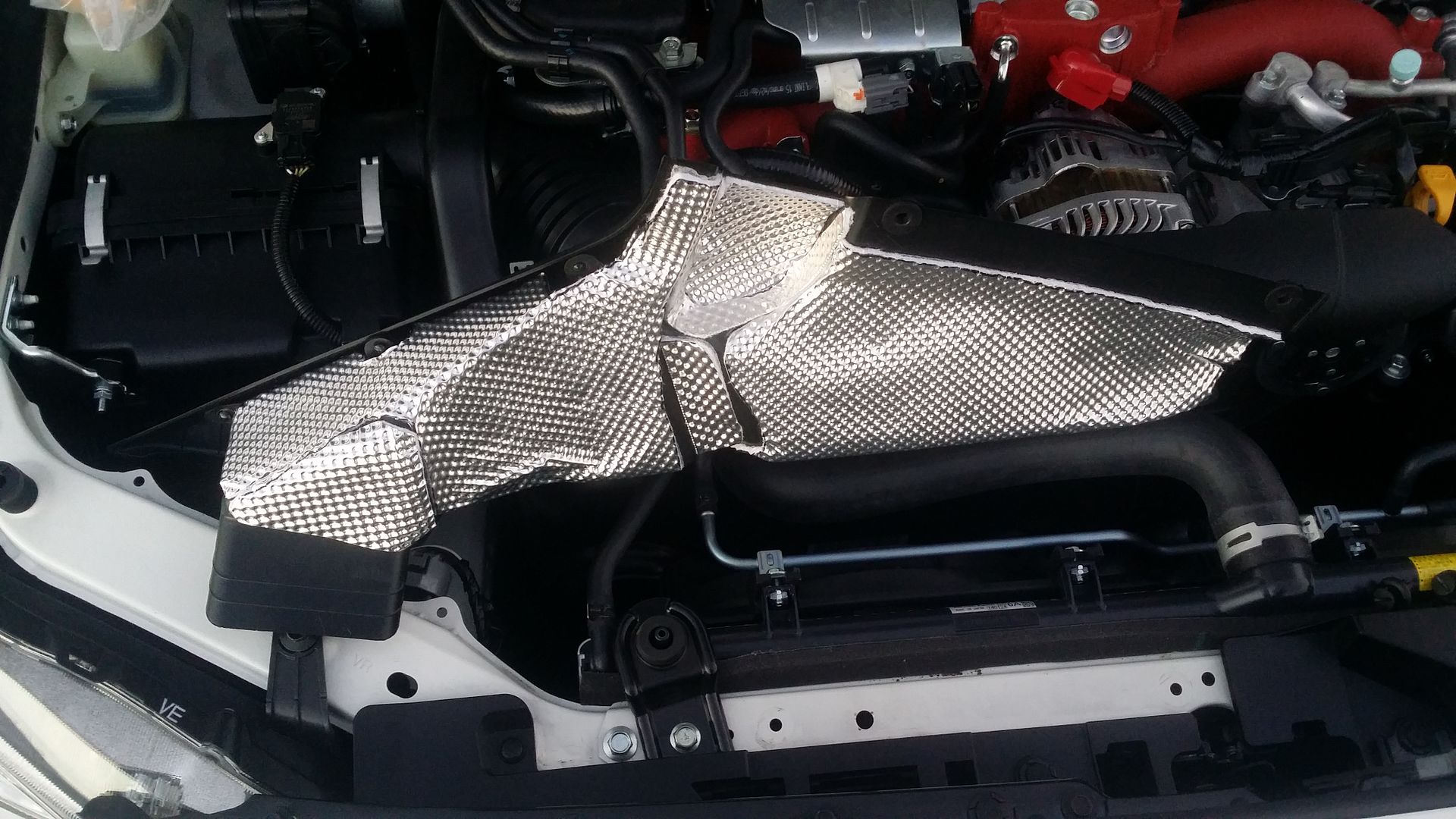
Next comes sealing the gaps with high temp sealant to help bind them together and keep it seemless. I used high temp Permatex silicone. The sealant dries in an hour but allow it to cure for 24 hours before reinstalling the intake snorkus.

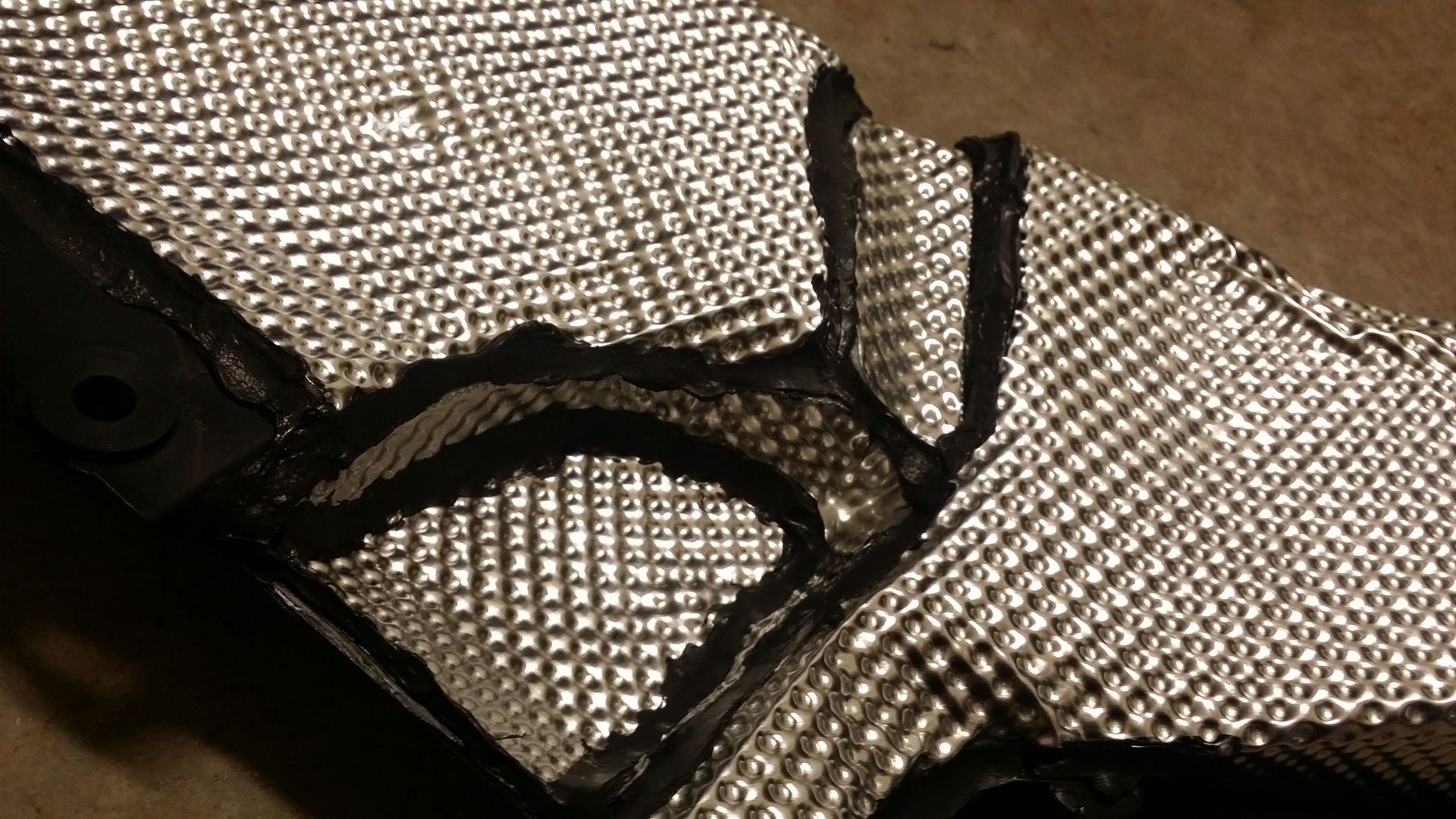
Reinstalled after 24 hours. Still fits like stock. Now for some test results...

This is the outside ambient temp tonight. It's been pretty warm at night here in Hawaii. Sorry for the blurry pics, I took it while driving (yeah I shouldn't do that).

Before moving onto the results, here are some references to comparison on my Cobb AP before I did this mod the night before.
Ambient: 84°F
Min: 88°F (+4°F)
Max: 102°F (+18°F)
Cruising: 96°F (+12°F)
Here are the blurry results while driving (apologies again). The DEI heat barrier helped a ton. Temp deltas are very close to ambient. Never did it go over 90°F and the intake snorkus was cool to the touch as if it was never ran. However the barrier was hot of course because it absorbed all the heat.
Ambient: 82°F
Min: 84°F (+2°F)
Max: 90°F (+8°F)
Cruising: 86°F (+4°F)

So far, this is an effective mod and a great start to keep heat soak at bay. I am going to continue gathering more data, especially during the day when ambients are higher in the 90's.
I'm also going to build my own airbox for my Cobb SF Intake that is sitting on the side. Cobb hasn't released an airbox for the 2015 STI SF intake as of yet but I will be experimenting and building one with Kydex (ABS plastic used for knife sheaths and gun holsters) for better heat resistance than Cobb's aluminum airbox. I was always against aftermarket intakes but since I am getting it protuned, I might was well reap the benefits. Stay tuned...
Let's reflect. First off, the front intake snorkus or scoop located under the hood, sits on top of the blazing hot radiator. From there, the already hot air is fed into the airbox where it passes through the MAF sensor, which then enters the intake elbow that is heated again by two more radiator hoses clipped on top of it. Continuing on, the air is sucked into the turbo via the turbo inlet. The air is compressed in the turbo's compressor housing, become more hot before entering the "omghot" TMIC that is massively heat soaked by turbo's hot section. All of this, combined with hot climate ambients and/or sitting in traffic can lead to heat soak until the car is in motion. But getting the car in motion only helps so much. We need to add some heat insulation to the first thing the air passes through.

The one thing I noticed when I check my oil levels is that the intake snorkus is hot to the touch after driving for quite a while. And as I mentioned, it sits above the scorching radiator. Putting something like this heat barrier insulation from DEI, under the snorkus can greatly reduce temps. It is a heat resistant, malleable aluminum sheet with some sort of thick internal fibers that withstands +1000°F and conforms to any shape or surface. It's adhesive backing withstands +400°F for high temp mounting under the hood.



I had first mocked up the heat barrier with some cardboard and then cut them to shape after tracing. The area under the snorkus has lots of indentations and bends so I had to cut it in pieces to make it work. Remember to watch area where the two rad hoses pass through as the aluminum can cut them.

Next comes sealing the gaps with high temp sealant to help bind them together and keep it seemless. I used high temp Permatex silicone. The sealant dries in an hour but allow it to cure for 24 hours before reinstalling the intake snorkus.


Reinstalled after 24 hours. Still fits like stock. Now for some test results...

This is the outside ambient temp tonight. It's been pretty warm at night here in Hawaii. Sorry for the blurry pics, I took it while driving (yeah I shouldn't do that).

Before moving onto the results, here are some references to comparison on my Cobb AP before I did this mod the night before.
Ambient: 84°F
Min: 88°F (+4°F)
Max: 102°F (+18°F)
Cruising: 96°F (+12°F)
Here are the blurry results while driving (apologies again). The DEI heat barrier helped a ton. Temp deltas are very close to ambient. Never did it go over 90°F and the intake snorkus was cool to the touch as if it was never ran. However the barrier was hot of course because it absorbed all the heat.
Ambient: 82°F
Min: 84°F (+2°F)
Max: 90°F (+8°F)
Cruising: 86°F (+4°F)

So far, this is an effective mod and a great start to keep heat soak at bay. I am going to continue gathering more data, especially during the day when ambients are higher in the 90's.
I'm also going to build my own airbox for my Cobb SF Intake that is sitting on the side. Cobb hasn't released an airbox for the 2015 STI SF intake as of yet but I will be experimenting and building one with Kydex (ABS plastic used for knife sheaths and gun holsters) for better heat resistance than Cobb's aluminum airbox. I was always against aftermarket intakes but since I am getting it protuned, I might was well reap the benefits. Stay tuned...




